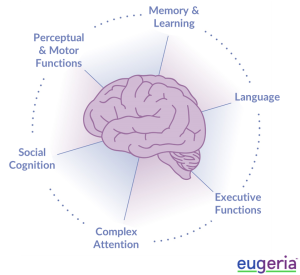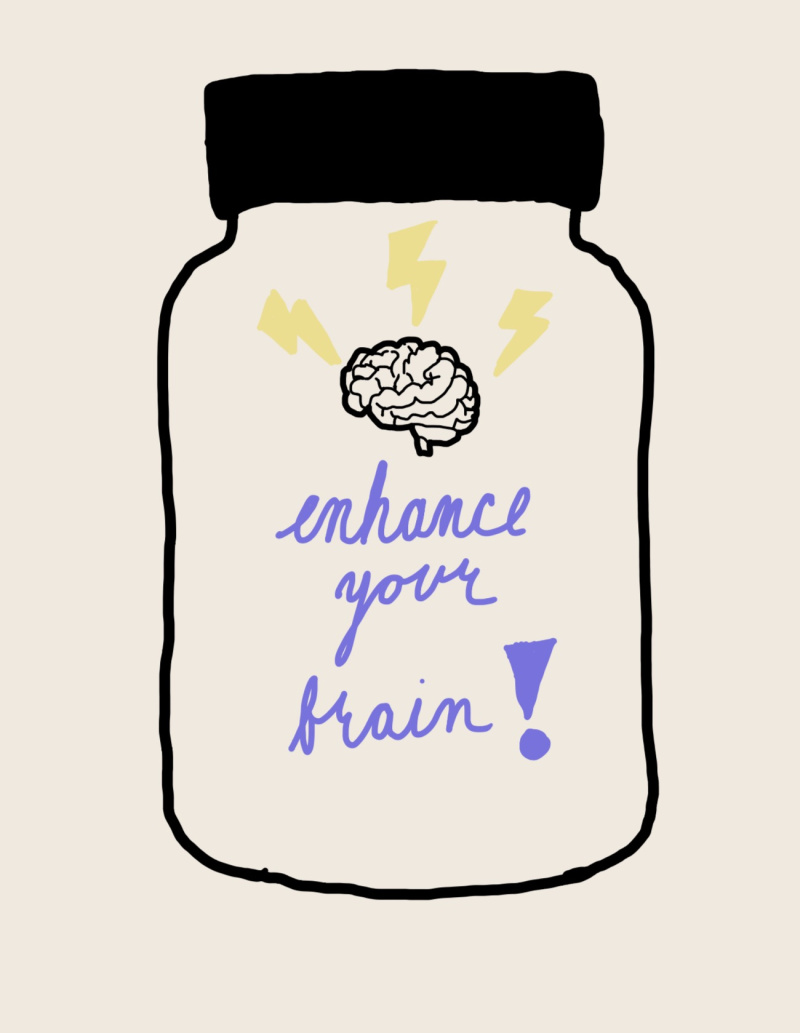What are nootropics?
Nootropics can be defined as “natural, semi-synthetic and synthetic molecules that claim to enhance cognitive function.” Often, they are consumed in the form of supplements. However, these supplements have yet to be approved by the FDA for the general population.

Intellectual Disability
Intellectual disability, or ID, affects 1 in 20 people in the United States. Those who suffer from ID also suffer from emotional and financial burdens along with “direct impairments on the individual and their ability to function in society.” [1] As such, there have been many attempts to improve the everyday lives of these people. However, all these therapies can be challenging because one size doesn’t fit all in this case. For example, a medication that targets gene defects may work for a person who develops ID because of a gene mutation, but it will not work for someone who develops ID because of disease. It’s clear that a one size fits all therapy would be the best outcome for everyone. Therapies that generalize to many types of disorders or conditions that are associated with cognitive dysfunction may be useful. There are a total of six neurocognitive domains, pictured below, that are assessed when addressing ID: perceptual and motor function, language and memory, social cognition, attention, and executive function. All these domains function together, and they do not and cannot operate in an isolated form. Knowing this, scientists have been working on multiple strategies that would help to enhance cognitive functioning. The two that will be addressed are environmental enrichment and pharmacological strategies that target signaling pathways.

Environmental Enrichment
When talking about animals in this sense, it is easy to control their environment, but less so when talking about humans. Experimenting with rats, for example, researchers can control whether they are in an environment that enriches the rat or one that causes stress. Environmental enrichment is “the stimulation of the brain by its physical and social surroundings.” [2] It isn’t as easy to control our own environment, but we can avoid things that cause stress, as well as indulge ourselves in things that lead to happiness. Some examples that give us enrichment are mental stimulation, light, social partners, the birth of a baby, developing a hobby, etc. All these examples add value to our lives. [3]

Pharmacological Strategies
Before addressing that pharmacological strategies that can be used to treat ID, we first need to address BDNF. Brain-derived neurotropic factor, BDNF, plays an important role in survival and growth of neurons. It also plays a role in neuroplasticity which aids in memory and learning. BDNF is released in response to neuronal activity and binds to specific receptors on neuron surfaces which promotes their survival and growth. Too much or too little BDNF in the brain causes problems, everything in moderation. Too much may cause seizures, while too little is associated with ID. For those of us who do not suffer from ID, there are natural remedies to increase BDNF: coffee, blueberries, omega-3, zinc, and so much more. [4] Although supplements may not be FDA-approved, there are plenty of safe, healthy, and natural ways to increase BDNF levels. On the other hand, for those who do suffer from ID, ampakines seem to be a very promising remedy. Ampakines are drugs that directly increase the levels of BDNF, and support neuronal survival and differentiation.
So, what?
BDNF levels are decreased in the brains of those diagnosed with ID. There are non-pharmacological and pharmacological strategies to address this, and combining both is the most promising. Do not use this information as a diagnosis, or treatment for yourself or someone you may know. It’s important to know that these strategies may not work for everyone. All this information is just the basis to ID and what is going on in the brain. There still needs to be more development and research to help improve the lives of those with ID. But the information that has known is a great start.
[1] Morè, L., Lauterborn, J. C., Papaleo, F., & Brambilla, R. (2020). Enhancing cognition through pharmacological and environmental interventions: Examples from preclinical models of neurodevelopmental disorders. Neuroscience & Biobehavioral Reviews, 110, 28–45. https://doi.org/10.1016/j.neubiorev.2019.02.003
[2] McDonald, M. W., Hayward, K. S., Rosbergen, I. C. M., Jeffers, M. S., & Corbett, D. (2018, June 14). Is environmental enrichment ready for clinical application in human post-stroke rehabilitation? Frontiers. Retrieved April 27, 2023, from https://www.frontiersin.org/articles/10.3389/fnbeh.2018.00135/full
[3] McDonald, M. W., Hayward, K. S., Rosbergen, I. C. M., Jeffers, M. S., & Corbett, D. (2018, June 14). Is environmental enrichment ready for clinical application in human post-stroke rehabilitation? Frontiers. Retrieved April 27, 2023, from https://www.frontiersin.org/articles/10.3389/fnbeh.2018.00135/full
[4] How to increase BDNF: 10 Ways To Rescue Your Brain. Strong Coffee Company. (n.d.). Retrieved April 27, 2023, from https://strongcoffeecompany.com/blogs/strong-words/how-to-increase-bdnf-10-ways-to-rescue-your-brain
